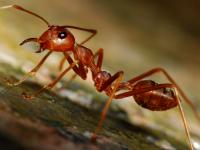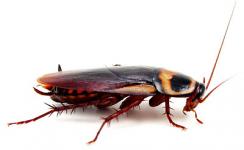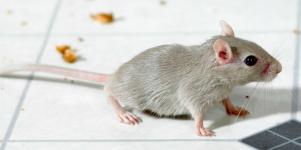IQ PUBLIC HEALTH is an effective and environmentally sensitive solutions for control key pest at homes and gardens.
There is a whole range of different garden and home pests that are responsible for inflicting damage to your backyard. They can be anything from bugs and insects to rodents and other wildlife (deer, foxes, raccoons), and other animals such as worms and spiders.
Common garden & home pests
Garden insects
Aphids
- Cause damage to plants by consuming leaves.
- Spread plant diseases.
- Secrete large amounts of honeydew, which attracts other garden pests.
Ants
- More of a nuisance than a pest.
- Different species have a different effect on your garden. Fire ants can cause a nasty sting whilst carpenter ants can cause damage to wooden structures.
- Can also be responsible for attacking fruit plants to fulfill their sweet tooth craving.
- In some cases, they have been known to protect aphids from predators in order to ensure a constant supply of honeydew
Termites
- Feed on organic matter made from cellulose
- Will consume wood in the form of trees, mulch, wooden fences and gates, sheds, tree stumps, and decking.
- Can use your garden as a stepping stone to your home
Flies
- Will use specific areas to feed and breed
- Can spread certain diseases such as salmonella if they come into contact with human food
- Some species can cause painful bites
Mosquitoes
- Use standing water, often found in buckets and ponds, to breed
- Will bite humans
- Can spread diseases such as Malaria and Zika virus
Wasps, bees, and hornets
- Will build nests underground, in sheds, on trees, and the underside of decking
- Will sting if they feel threatened or if you are too close to their nest
- Attracted to flowers and fruit
Garden Rodents
Rats
- Will consume fruits, vegetables, and seeds
- Naw at shed doors and outside lighting wires.
- Spread diseases through urine and feces.
Mice
- Will eat fruits and vegetables but prefer seeds.
- Will gnaw on garden furniture.
- Disrupt soil by burrowing underground, depending on species.
Squirrels
- Will eat flower buds
- Strip bark off trees making them vulnerable to weather conditions and diseases
Voles
- Consume garden vegetation.
- Disrupt soil by burrowing underground, making lawns uneven and soft.
Other garden pests
Moles
- Disrupt soil by burrowing underground
Slugs and snails
- Most common garden pest
- Thrive in damp conditions
- Feed on a large range of living and decaying plants
Spiders
- Some species can be venomous
- Being the natural predators of some garden pests, they can actually be quite beneficial to your backyard.
Insect pests of stored foods
Insects infesting stored foods are one of the most common household insect problems. The many different kinds of insects that infest stored dried foods are often referred to as "pantry pests."
Significance
Pantry pests contaminate more food than they consume, and most people find the contaminated products unfit for consumption. Pantry pests are often discovered when they leave infested foods to crawl or fly about the house. They often accumulate in pots, pans or dishes or on window sills. Fortunately, they do not bite or sting people or pets nor do they feed on or damage the house structure or contents.
What do they eat?
Nearly all dried food products are susceptible to insect infestation, including cereal products (flour, cake mix, cornmeal, rice, spaghetti, crackers, and cookies); seeds such as dried beans and popcorn; nuts; chocolate; raisins and other dried fruits; spices; powdered milk; tea; and cured meats. Non-food items that may be infested include birdseed, dry pet food, ornamental seed and dried plant displays, ornamental corn, dried flowers, garden seeds, potpourri, and rodent baits.
Stored food insects are most likely to infest products that have been opened but are also capable of penetrating unopened paper, thin cardboard, and plastic, foil, or cellophane-wrapped packages. They may chew their way into packages or crawl in through folds and seams. Insects within an infested package begin multiplying and can spread to other stored foods not only in the same area but in other rooms in a home. All stages (egg, larva, pupa, and adult) may be present simultaneously in infested products.
Where do they come from?
A stored food product can become infested anywhere during the process from production until it arrives in your home. However, stored food is most likely to become infested in stores or in homes. Most of the stored food insects also are pests of stored grain or other commodities and may be relatively abundant outdoors. Food products that are left undisturbed on the shelves for long periods are particularly susceptible to infestation. However, foods of any age can become infested.
Identification and biology of common stored product insects
Indianmeal moths (Plodia interpunctella) are the most common moths infesting food in homes. These moths have a wingspan of 1/2 to 5/8 inch. When at rest, they fold their wings behind themselves, over their bodies. The base of the front wing is pale gray or tan and the outer two-thirds is reddish-brown with a coppery luster. The wing markings are distinctive, but may be less clear if the scales have been rubbed from the wings. Indianmeal moths may be found inside infested products or flying around homes.
The larvae are whitish worms with shades of yellow, pink, green, or brown and grow to 1/2 inch long.
Only the larvae feed in stored products, which can be any dry stored food or whole grain. Foods infested with these insects will have silk webbing present on the surface of the product. Larvae often leave the food when mature and may move long distances before stopping to spin a cocoon. It is common to find caterpillars and cocoons on ceilings and walls. Adult moths may be seen up to several weeks after the food source has been removed.
Meal moths (Pyralis farinalis) have a wingspan of about 3/4 - 1 inch. Their forewings have a dark reddish brown band across the top and bottom of the wings with an olive or yellowish green band, outlined by wavy white lines in the center. Their abdomen is typically curved up at a 90° angle when at rest. The larvae have a black head and a whitish body with some orange at the end of the body. They often form feeding tubes made of silk and tiny pieces of food. Meal moths are found feeding on a wide variety of flour and grain products and seeds, especially when they are damp. These moths are not common in homes.
Sawtoothed grain beetles (Oryzaephilus surinamensis) are about 1/10 inch long, slender, flattened, and brownish-red to almost black in color. They are easily identified by the saw-like teeth on each side of the thorax. Larvae are cream-colored, slender, and about 1/8 inch long, although they are rarely noticed by residents. Sawtoothed grain beetles are found in many different food items, including dried fruit, cereals, nuts, dried meat, macaroni, and seeds.
Drugstore beetles and cigarette beetles (Lasioderma serricorne and Stegobium panicum) are about 1/8 inch long, oval, and brown. The head is bent downward giving the insect a humped appearance. Both species fly and can be found around windows. Larvae are 1/8 inch long when mature, and yellowish-white with a light brown head (the larvae are not usually noticed by residents). They have a curved body covered with fine hair. Cigarette and drugstore beetles feed on a wide variety of dried plant products such as spices, macaroni and other grain based foods, dried flowers, tobacco products, and even paper products, including books.
Flour beetles (Tribolium confusum and T. castaneum) are 3/16 inch long, reddish-brown, and elongate oval in shape. Larvae are cylindrical, whitish, or cream-colored and up to 1/4 inch long and have two small pointed spines on the tail end (the larvae are not usually noticed by residents). Two species of flour beetles may be found: red flour beetles are common in homes and the confused flour beetle is a frequent pest in flour mills. Flour beetles infest many types of dried food products, such as flour, bran, cereal products, dried fruits, nuts, and chocolate.
Warehouse and cabinet beetles (Trogoderma spp.) are elongate oval and 1/8 to 3/16 inch long. They may be solid black or mottled with yellowish-brown markings. Larvae are long and narrow, yellowish to dark brown, hairy and generally grow to about 1/4 inch (although they may not be noticed by residents). Warehouse and cabinet beetles feed in a wide variety of food products, such as grain products, seeds, dried fruits, animal by-products skins, fur, hair, and pet food. They are also known to feed on dead insects and animal carcasses.
Granary, rice, and maize weevils (Sitophilus spp.) are slender insects with a conspicuous snout projecting forward from the head. They are dark brown, sometimes with four orangish spots on the wing covers. They are less than 3/16 inch long. Larvae are white, legless, and looked wrinkled and are only found inside whole kernels or seeds. These weevils attack only whole grains or seeds, leaving small round exit holes in infested kernels. They rarely are found in nuts, dried fruits, macaroni, and caked or crusted milled products such as flour. (A different, larger species of weevil can be found in homes during the fall due to emergence from acorns or hickory nuts collected and stored inside).
Spider beetles (family Ptinidae) are reddish brown, 3/16 inch beetles with long legs and a somewhat, spider-like appearance. The larvae are C-shaped and whitish; they remain in infested material and aren't normally seen. Spider beetles infest a variety of dried plant products.
Bean weevils (Acanthoscelides obtectus) are a type of seed beetle. They are a mottled light and dark brown, broadly oval, and about 1/8 inch long. They have short wing covers which exposes part of the abdomen. Unlike other weevils, bean weevils lack a conspicuous snout. The larvae are small, whitish, legless, and C-shaped. They feed inside dried beans and peas.














